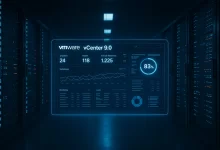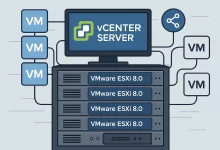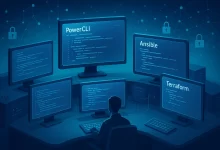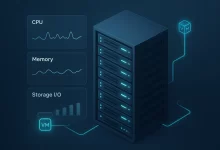
I’m gonna be honest—when I first fired up the installer for VMware vCenter Server 9.0, I half-expected a routine patch. You know, the usual “meh, another minor tune-up”. Nope. Within the first coffee break, it was clear that Broadcom’s engineering team had slipped a truck-load of goodies under the hood. We’re talking everything from slick UI moves to GPU-aware live-migration wizardry. Let’s unpack it, one imperfect but heartfelt paragraph at a time. The Big Picture: Centralized Control That Actually Scales vCenter remains the single pane of glass for sprawling vSphere landscapes. Released on June 17, 2025—mark that date—the 9.0 GA build doubles down on high-visibility, low-stress management across on-prem racks and cloudy outposts. My “Oh-Wow” Setup Moment Story time. I...

VMware ESXi 8.0 and vCenter Server 8.0 deployment represents the modern foundation for virtualized infrastructure, blending a streamlined hypervisor with a powerful management plane. Whether consolidating on-premises workloads, preparing for hybrid-cloud expansion, or exploring containerized integrations, this guide delivers professional insights and actionable best practices to ensure a resilient architecture. Understanding the Platform Architecture At its core, VMware ESXi 8.0 is a bare-metal hypervisor that installs directly onto server hardware—no underlying OS is required—minimizing attack surface and resource overhead. In contrast, vCenter Server 8.0 serves as the centralized management platform, orchestrating advanced features like vMotion, Distributed Resource Scheduler (DRS), High Availability (HA), and streamlined lifecycle management. Planning Your Infrastructure Successful deployment begins with capacity and compatibility planning. Verify that your...

Automation transforms your VMware environment from a manual, error-prone setup into a consistent, repeatable platform that scales with your business. In this guide, we dive deep into scripting and infrastructure-as-code to automate virtual machine provisioning, network configuration, and security hardening. You’ll come away with concrete examples using PowerCLI, Ansible, NSX APIs, and Terraform to streamline operations and enforce compliance. 1. Automating VM Deployments 1.1 PowerCLI for Rapid Provisioning # Connect to vCenter Connect-VIServer -Server vcsa.example.com -User [email protected] -Password 'P@ssw0rd' # Create a new VM from template New-VM -Name "WebServer01" ` -Template "Win2019-Template" ` -Datastore "Datastore1" ` -VMHost "esxi01.example.com" ` -NetworkName "Prod-Net" ` -NumCpu 4 -MemoryGB 8 Best Practices: Use templates with pre-installed VMware Tools and security patches. Parameterize VM names,...

Ensuring smooth, predictable performance in your VMware environment requires more than just throwing hardware at the problem. By carefully allocating resources, fine-tuning settings, and adhering to best practices, you can maximize throughput, minimize latency, and keep virtual machines running at peak efficiency. In this deep-dive guide, we’ll cover: 1. CPU Optimization & Overcommit Management 1.1 Leverage Hardware Virtualization Enable Intel VT-x / AMD-V in BIOS/UEFI for all ESXi hosts. Use Enhanced vMotion Compatibility (EVC) clusters to ensure consistent CPU feature sets across hosts. 1.2 Right-sizing vCPU Allocation Match vCPUs to Workload: Don’t assign more vCPUs than a VM needs—idle vCPUs waste host cycles. Avoid Overcommitment Pitfalls: ESXi can overcommit vCPUs, but keep vCPU:core ratio at or below 4:1 to reduce...

Creating a rock-solid VMware virtualization environment starts with a clean, repeatable installation and follows through with proper configuration. In this comprehensive guide, we’ll walk through every step—from selecting the right VMware edition to launching your first virtual machine (VM). We’ll cover: 1. Edition Selection & Licensing Before you download any software, choose the VMware product that best fits your needs: VMware Workstation Pro (Windows/Linux desktop) Ideal for power users and developers who need advanced snapshot management, shared VM folders, and remote connections. VMware Player (free for non-commercial use) Good for simple VM testing without advanced features. VMware ESXi (bare-metal hypervisor) Best for datacenter deployments. Installs directly on server hardware for maximum performance. VMware Fusion (macOS) Native virtualization on Mac with...


 FoxDoo Technology
FoxDoo Technology FoxDoo Technology
FoxDoo Technology


